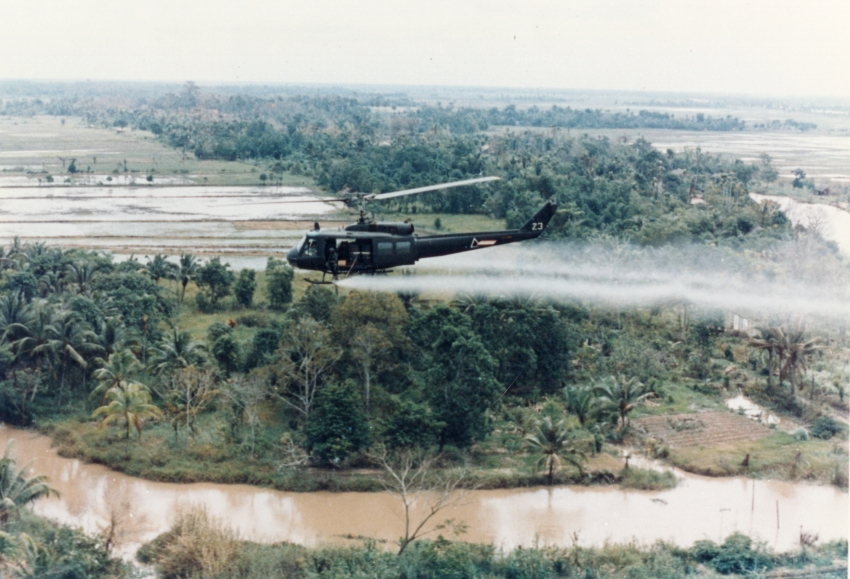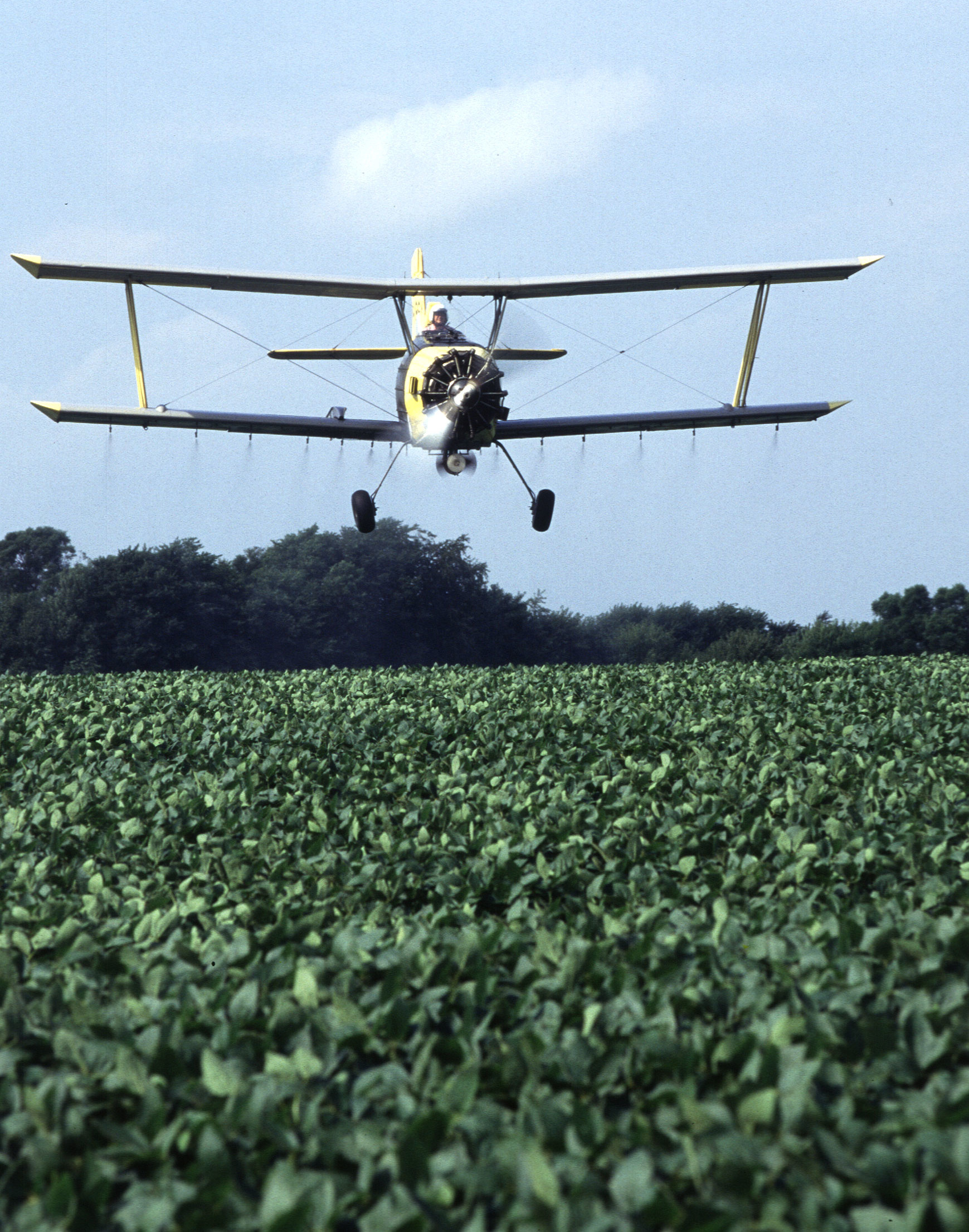|
Polyhalogenated Compound
Polyhalogenated compounds (PHCs) are any compounds with multiple substitutions of halogens. They are of particular interest and importance because they bioaccumulate in humans, and comprise a superset of which has many toxic and carcinogenic industrial chemicals as members. PBDEs, PCBs, dioxins (PCDDs) and PFCs are all polyhalogenated compounds. They are generally non-miscible in organic solvents or water, but miscible in some hydrocarbons from which they often derive. Uses PHCs are used in a vast array of manufactured products, from wood treatments to cookware coatings, to non-stick, waterproof, and fire-resistant coatings, cosmetics, medicine, electronic fluids, food containers, and wrappings, in everything from furniture and furnishings, automobiles, airplanes, plastics, clothing and cloth, surgery, insulation, adhesives, paints, sealants, lubricating oils, polyurethane foams, cancer therapy, and medical imaging. They are also heavily used in pest control. Safety PHCs in ... [...More Info...] [...Related Items...] OR: [Wikipedia] [Google] [Baidu] |
Halogen
The halogens () are a group in the periodic table consisting of five or six chemically related elements: fluorine (F), chlorine (Cl), bromine (Br), iodine (I), astatine (At), and tennessine (Ts). In the modern IUPAC nomenclature, this group is known as group 17. The word "halogen" means "salt former" (or "salt maker"). When halogens react with metals, they produce a wide range of salts, including calcium fluoride, sodium chloride (common table salt), silver bromide and potassium iodide. The group of halogens is the only periodic table group that contains elements in three of the main states of matter at standard temperature and pressure. All of the halogens form acids when bonded to hydrogen. Most halogens are typically produced from minerals or salts. The middle halogens—chlorine, bromine, and iodine—are often used as disinfectants. Organobromides are the most important class of flame retardants, while elemental halogens are dangerous and can be toxic. History The fl ... [...More Info...] [...Related Items...] OR: [Wikipedia] [Google] [Baidu] |
Clothing
Clothing (also known as clothes, apparel, and attire) are items worn on the body. Typically, clothing is made of fabrics or textiles, but over time it has included garments made from animal skin and other thin sheets of materials and natural products found in the environment, put together. The wearing of clothing is mostly restricted to human beings and is a feature of all human societies. The amount and type of clothing worn depends on gender, body type, social factors, and geographic considerations. Garments cover the body, footwear covers the feet, gloves cover the hands, while hats and headgear cover the head. Eyewear and jewelry are not generally considered items of clothing, but play an important role in fashion and clothing as costume. Clothing serves many purposes: it can serve as protection from the elements, rough surfaces, sharp stones, rash-causing plants, insect bites, by providing a barrier between the skin and the environment. Clothing can insulate against ... [...More Info...] [...Related Items...] OR: [Wikipedia] [Google] [Baidu] |
PBDE
Polybrominated diphenyl ethers or PBDEs, are a class of organobromine compounds that are used as flame retardants. Like other brominated flame retardants, PBDEs have been used in a wide array of products, including building materials, electronics, furnishings, motor vehicles, airplanes, plastics, polyurethane foams, and textiles. They are structurally akin to polychlorinated diphenyl ethers (PCDEs), polychlorinated biphenyls (PCBs) and other polyhalogenated compounds, consisting of two halogenated aromatic rings. PBDEs are classified according to the average number of bromine atoms in the molecule. The health hazards of these chemicals have attracted increasing scrutiny, and they have been shown to reduce fertility in humans at levels found in households. Because of their toxicity and persistence, the industrial production of some PBDEs is restricted under the Stockholm Convention, a treaty to control and phase out major persistent organic pollutants (POPs). Classes of PBDEs The ... [...More Info...] [...Related Items...] OR: [Wikipedia] [Google] [Baidu] |
Polychlorinated Diphenyl Ethers
Polychlorinated diphenyl ethers (PCDEs) are structurally similar to polychlorinated biphenyls (PCBs), both which may be toxic polyhalogenated compounds and some PCDE congeners have been reported to cause toxic responses similar to those caused by some of the non- ortho-substituted PCBs, which are mediated by the aryl hydrocarbon receptor ( AhR). Congeners The family of PCDEs consists of 209 possible substances, which are called congeners. See also * Polybrominated diphenyl ethers References {{reflist Chloroarenes Immunotoxins ... [...More Info...] [...Related Items...] OR: [Wikipedia] [Google] [Baidu] |
Polychloro Phenoxy Phenol
Polychloro phenoxy phenols (polychlorinated phenoxy phenols, PCPPs) are a group of organic polyhalogenated compounds. Among them include triclosan and predioxin which can degrade to produce certains types of dioxins and furan Furan is a heterocyclic organic compound, consisting of a five-membered aromatic ring with four carbon atoms and one oxygen atom. Chemical compounds containing such rings are also referred to as furans. Furan is a colorless, flammable, highly ...s. Notably, however, the particular dioxin formed by degradation of triclosan, 2,8-DCDD, was found to be non-toxic in fish embryos. References Chloroarenes Incineration Phenols Ethers {{organohalide-stub ... [...More Info...] [...Related Items...] OR: [Wikipedia] [Google] [Baidu] |
Dibenzofurans
Dibenzofuran is a heterocyclic organic compound with the chemical structure shown at right. It is an aromatic compound that has two benzene rings fused to a central furan ring. All the numbered carbon atoms have a hydrogen atom bonded to each of them. It is a volatile white solid that is soluble in nonpolar organic solvents. It is obtained from coal tar, where it exists as a 1% component.Gerd Collin and Hartmut Höke "Benzofurans" in Ullmann's Encyclopedia of Industrial Chemistry, 2007, Wiley-VCH, Weinheim. Reactions Dibenzofuran is thermally robust with a convenient liquid range. These properties, together with its low toxicity, are exploited by the use of DBF as a heat transfer agent. It undergoes electrophilic reactions, such as halogenation and Friedel-Crafts reactions. Reaction of DBF with butyl lithium results in dilithiation.Ulrich Iserloh, Yoji Oderaotoshi, Shuji Kanemasa, and Dennis P. Curran "Synthesis of (R,R)-4,6-Dibenzofurandiyl-2,2'-Bis (4-Phenyloxazoline) (DBFO ... [...More Info...] [...Related Items...] OR: [Wikipedia] [Google] [Baidu] |
Hexachlorophene
Hexachlorophene, also known as Nabac, is an organochlorine compound that was once widely used as a disinfectant. The compound occurs as a white odorless solid, although commercial samples can be off-white and possess a slightly phenolic odor. It is insoluble in water but dissolves in acetone, ethanol, diethyl ether, and chloroform. In medicine, hexachlorophene is useful as a topical anti-infective, anti-bacterial agent, often used in soaps and toothpaste. It is also used in agriculture as a soil fungicide, plant bactericide, and acaricide. Removal from market French deaths In 1972, the "Bébé" brand of baby powder in France killed 39 babies. It also did great damage to the central nervous systems of several hundred other babies. The batch of toxic "Bébé" brand of powder was mistakenly manufactured with 6% hexachlorophene. This industrial accident directly led to the removal of hexachlorophene from consumer products worldwide. United States In 1972, the U.S. Food and Drug Ad ... [...More Info...] [...Related Items...] OR: [Wikipedia] [Google] [Baidu] |
Polychlorinated Dibenzodioxins
Polychlorinated dibenzodioxins (PCDDs), or simply dioxins, are a group of long-lived polyhalogenated compound, polyhalogenated organic compounds that are primarily anthropogenic, and contribute toxic, Persistent organic pollutant, persistent organic pollution in the environment. They are commonly but inaccurately referred to as dioxins for simplicity, because every PCDD molecule contains a dibenzo-1,4-dioxin skeletal structure, with 1,4-Dioxin, 1,4-dioxin as the central Ring (chemistry), ring. Members of the PCDD family bioaccumulation, bioaccumulate in humans and wildlife because of their lipophilicity, lipophilic properties, and may cause developmental disturbances and cancer. Because dioxins can persist in the environment for more than 100 years, the majority of PCDD pollution today is not the result of recent emissions, but the cumulative result of synthetic processes undertaken since the beginning of the 20th century, including organochloride-related manufacturing, incinera ... [...More Info...] [...Related Items...] OR: [Wikipedia] [Google] [Baidu] |
Pesticides
Pesticides are substances that are meant to control pests. This includes herbicide, insecticide, nematicide, molluscicide, piscicide, avicide, rodenticide, bactericide, insect repellent, animal repellent, microbicide, fungicide, and lampricide. The most common of these are herbicides which account for approximately 80% of all pesticide use. Most pesticides are intended to serve as plant protection products (also known as crop protection products), which in general, protect plants from weeds, fungi, or insects. As an example, the fungus ''Alternaria solani'' is used to combat the aquatic weed ''Salvinia''. In general, a pesticide is a chemical (such as carbamate) or biological agent (such as a virus, bacterium, or fungus) that deters, incapacitates, kills, or otherwise discourages pests. Target pests can include insects, plant pathogens, weeds, molluscs, birds, mammals, fish, nematodes (roundworms), and microbes that destroy property, cause nuisance, or spread disease, or ar ... [...More Info...] [...Related Items...] OR: [Wikipedia] [Google] [Baidu] |
Agent Orange
Agent Orange is a chemical herbicide and defoliant, one of the "tactical use" Rainbow Herbicides. It was used by the U.S. military as part of its herbicidal warfare program, Operation Ranch Hand, during the Vietnam War from 1961 to 1971. It is a mixture of equal parts of two herbicides, 2,4,5-T and 2,4-D. In addition to its damaging environmental effects, traces of dioxin (mainly TCDD, the most toxic of its type) found in the mixture have caused major health problems for many individuals who were exposed, and their offspring. Agent Orange was produced in the United States from the late 1940s and was used in industrial agriculture and was also sprayed along railroads and power lines to control undergrowth in forests. During the Vietnam War, the U.S. military procured over 20 million gallons consisting of a fifty-fifty mixture of 2,4-D and dioxin-contaminated 2,4,5-T. Nine chemical companies produced it: Dow Chemical Company, Monsanto Company, Diamond Shamrock Corporation, ... [...More Info...] [...Related Items...] OR: [Wikipedia] [Google] [Baidu] |
Pest Control
Pest control is the regulation or management of a species defined as a pest; any animal, plant or fungus that impacts adversely on human activities or environment. The human response depends on the importance of the damage done and will range from tolerance, through deterrence and management, to attempts to completely eradicate the pest. Pest control measures may be performed as part of an integrated pest management strategy. In agriculture, pests are kept at bay by mechanical, cultural, chemical and biological means. Ploughing and cultivation of the soil before sowing mitigate the pest burden, and crop rotation helps to reduce the build-up of a certain pest species. Concern about environment means limiting the use of pesticides in favour of other methods. This can be achieved by monitoring the crop, only applying pesticides when necessary, and by growing varieties and crops which are resistant to pests. Where possible, biological means are used, encouraging the natural enem ... [...More Info...] [...Related Items...] OR: [Wikipedia] [Google] [Baidu] |
Plastics
Plastics are a wide range of synthetic polymers, synthetic or semi-synthetic materials that use polymers as a main ingredient. Their Plasticity (physics), plasticity makes it possible for plastics to be Injection moulding, moulded, Extrusion, extruded or Compression molding, pressed into solid objects of various shapes. This adaptability, plus a wide range of other properties, such as being lightweight, durable, flexible, and inexpensive to produce, has led to its widespread use. Plastics typically are made through human industrial systems. Most modern plastics are derived from petrochemical, fossil fuel-based chemicals like natural gas or petroleum; however, recent industrial methods use variants made from renewable materials, such as corn or cotton derivatives. 9.2 billion tonnes of plastic are estimated to have been made between 1950 and 2017. More than half this plastic has been produced since 2004. In 2020, 400 million tonnes of plastic were produced. If global trends on pl ... [...More Info...] [...Related Items...] OR: [Wikipedia] [Google] [Baidu] |







